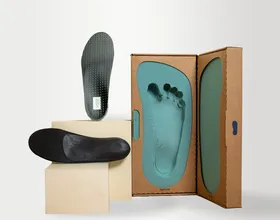Upstep Answers
Our team answers your questions about the causes and treatment of various podiatric conditions, including plantar fasciitis, flat feet, foot pain, and the use of custom orthotics.
Recent Answers
Should I Wear Orthotic Insoles When Exercising for Foot Pain?
Most conditions that cause pain in the feet will naturally worsen during exercise. If you have a painful foot condition and are prescribed orthotics for them, you might find yourself asking yourself w
Asked 4 years ago
Is It Normal for My Insoles to Hurt at First
Adjusting to new insoles - either premade or custom-built - can be uncomfortable at first. They are changing the way that your foot operates, which takes some getting used to. However, they should nev
Asked 4 years ago
How Can I Make My Orthotics More Comfortable?
ToOrthotics are there to correct errors in how your feet operate, which could mean reshaping them or totally realigning their positioning. There is no doubt that this will be uncomfortable at first, b
Asked 4 years ago
How Often Should I Replace My Custom Orthotics and How to Tell if I Need New Ones?
Worn-out and degraded orthotics can actually harm your body more than not wearing any at all. Thankfully, it isn't too difficult to discern when you need to get them replaced. What Classifies as "Worn
Asked 4 years ago
How Effective Are Custom Orthotics in Correcting Overpronation?
Overpronation is a foot problem categorized by the ankle rolling too far inward as you walk, putting extra pressure on your big toe and the inside of your foot. This can lead to a number of other cond
Asked 4 years ago
Related Articles

Best Materials for Orthotics: How and Why Orthotic Materials Differ
Babafemi Adebajo
December 19, 2024

Best Inserts for Basketball Shoes to Prevent Pronation
Janik Sundstrom
May 14, 2025

Do You Have Shin Splints? Learn How to Test Yourself at Home
Janik Sundstrom
December 17, 2024

Custom Orthotics for Plantar Fasciitis—2025 Review
Babafemi Adebajo
July 15, 2024

Metatarsal Pad Insoles: Can They Cure Your Foot Pain?
Janik Sundstrom
December 12, 2024
Recent Posts
Babafemi Adebajo
Treatment of Plantar Fibroma: Exercises, Insoles, and More
Dr. Leah Alexander
What Causes Pigeon Toe and How You Can Correct It
Upstep Staff
7 Best Exercises for Overpronated Feet
Janik Sundstrom



